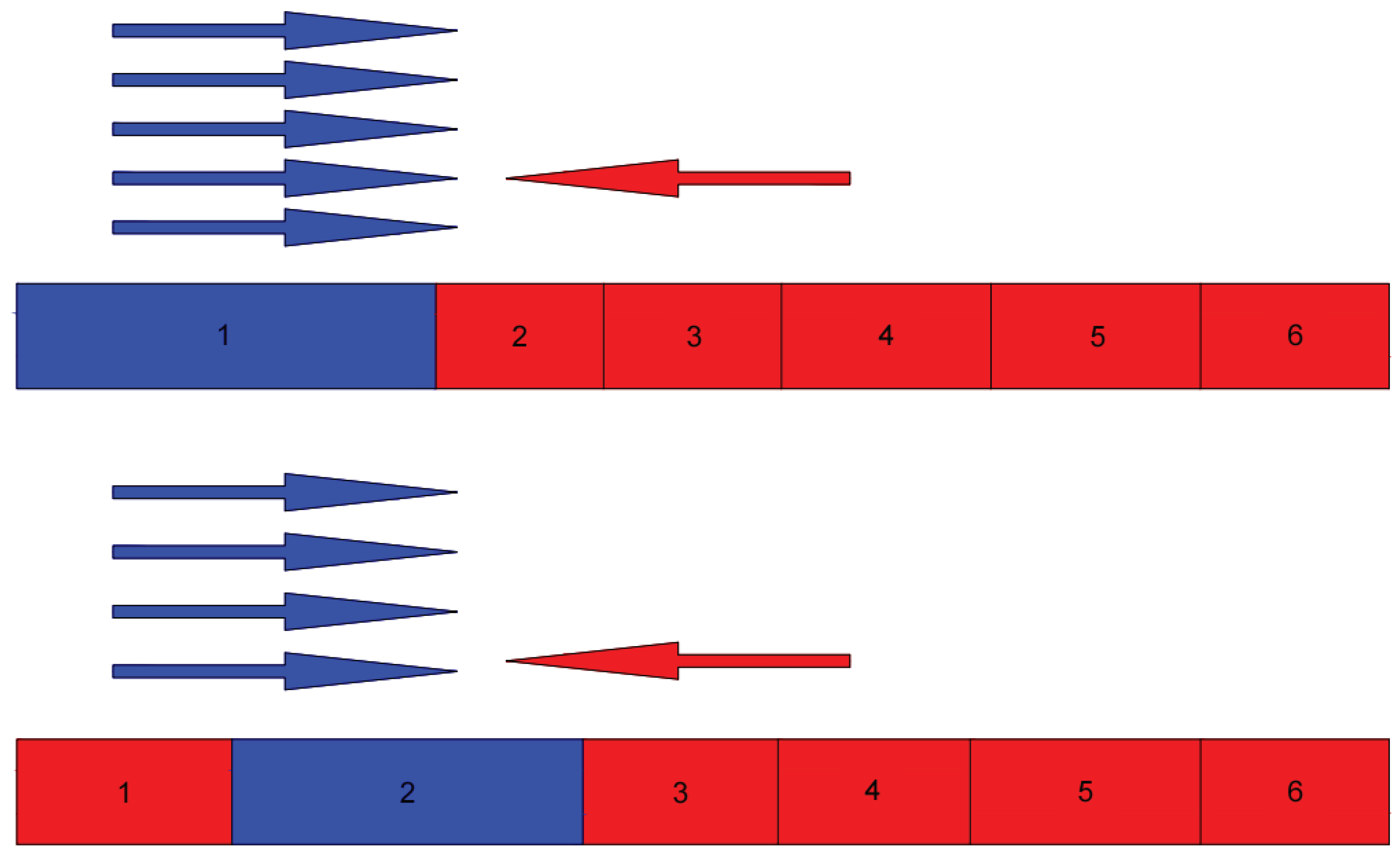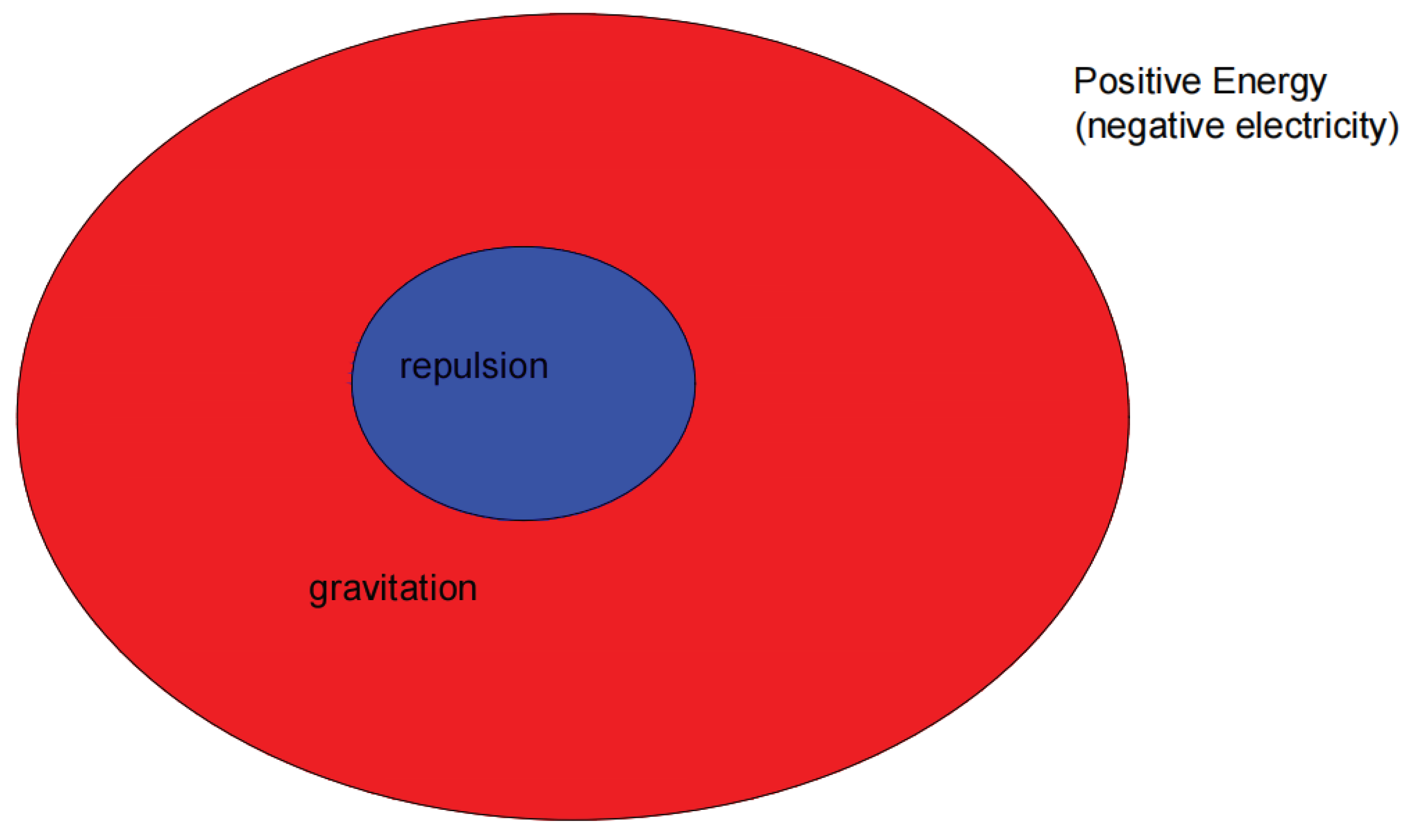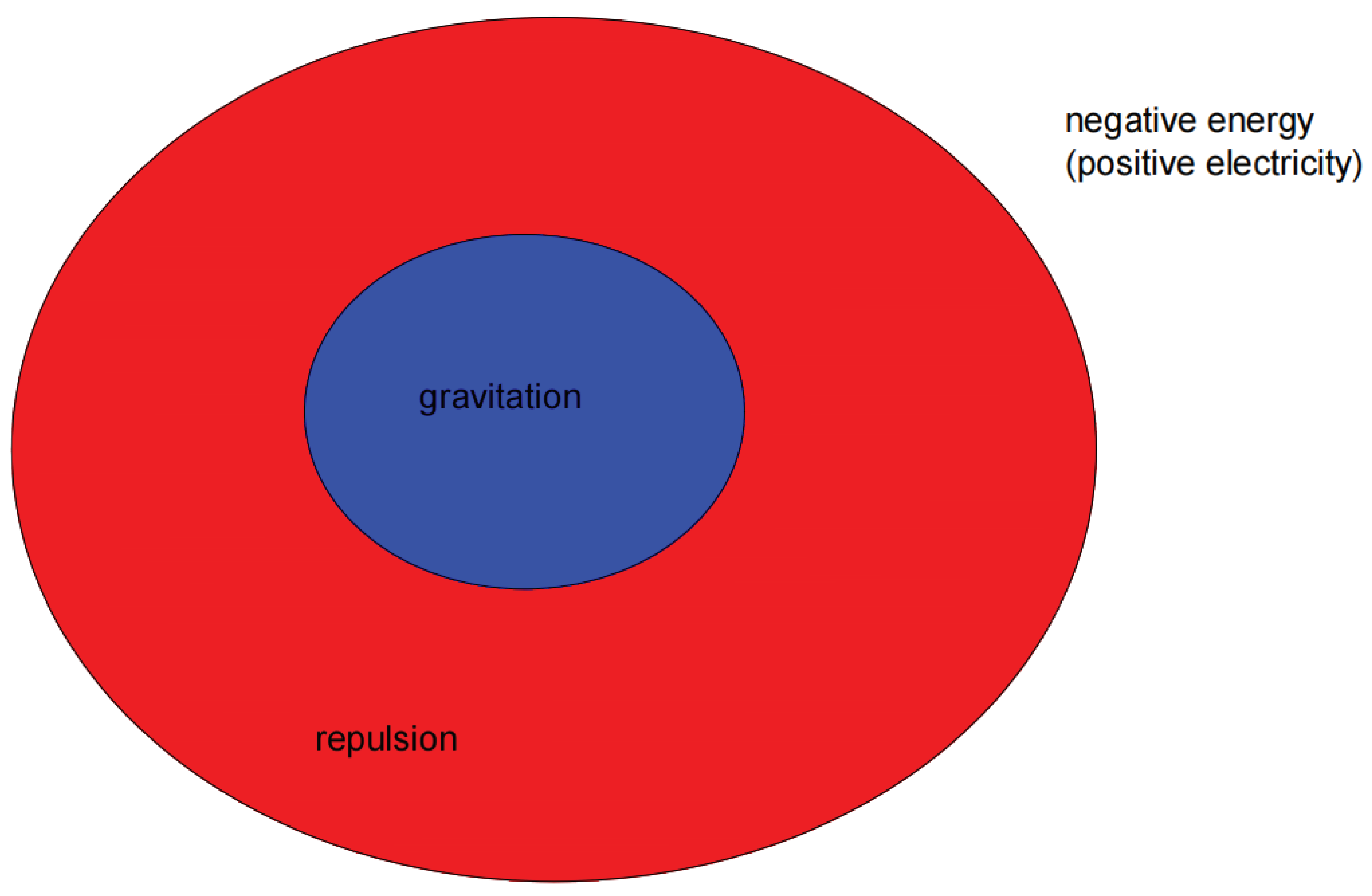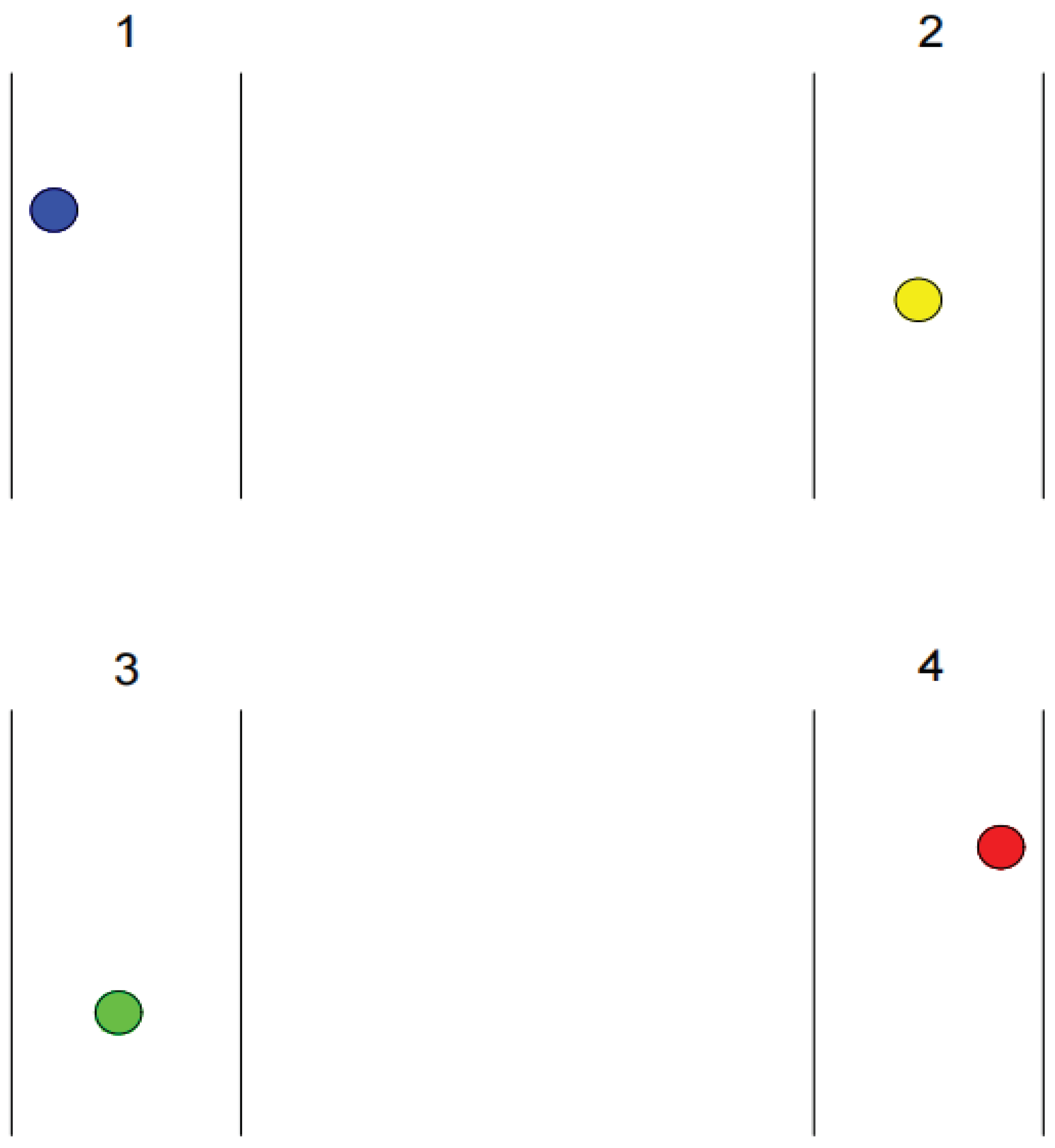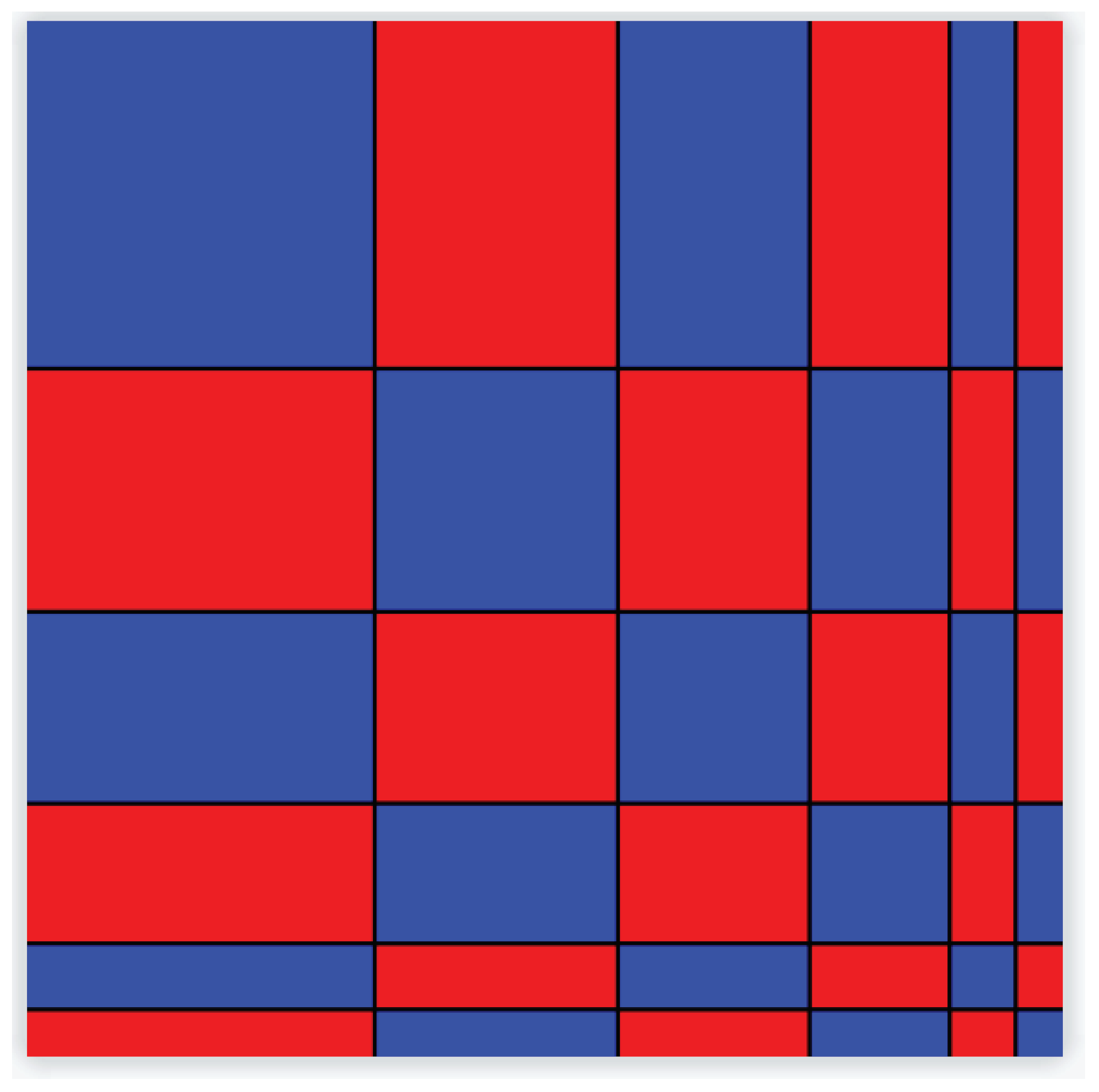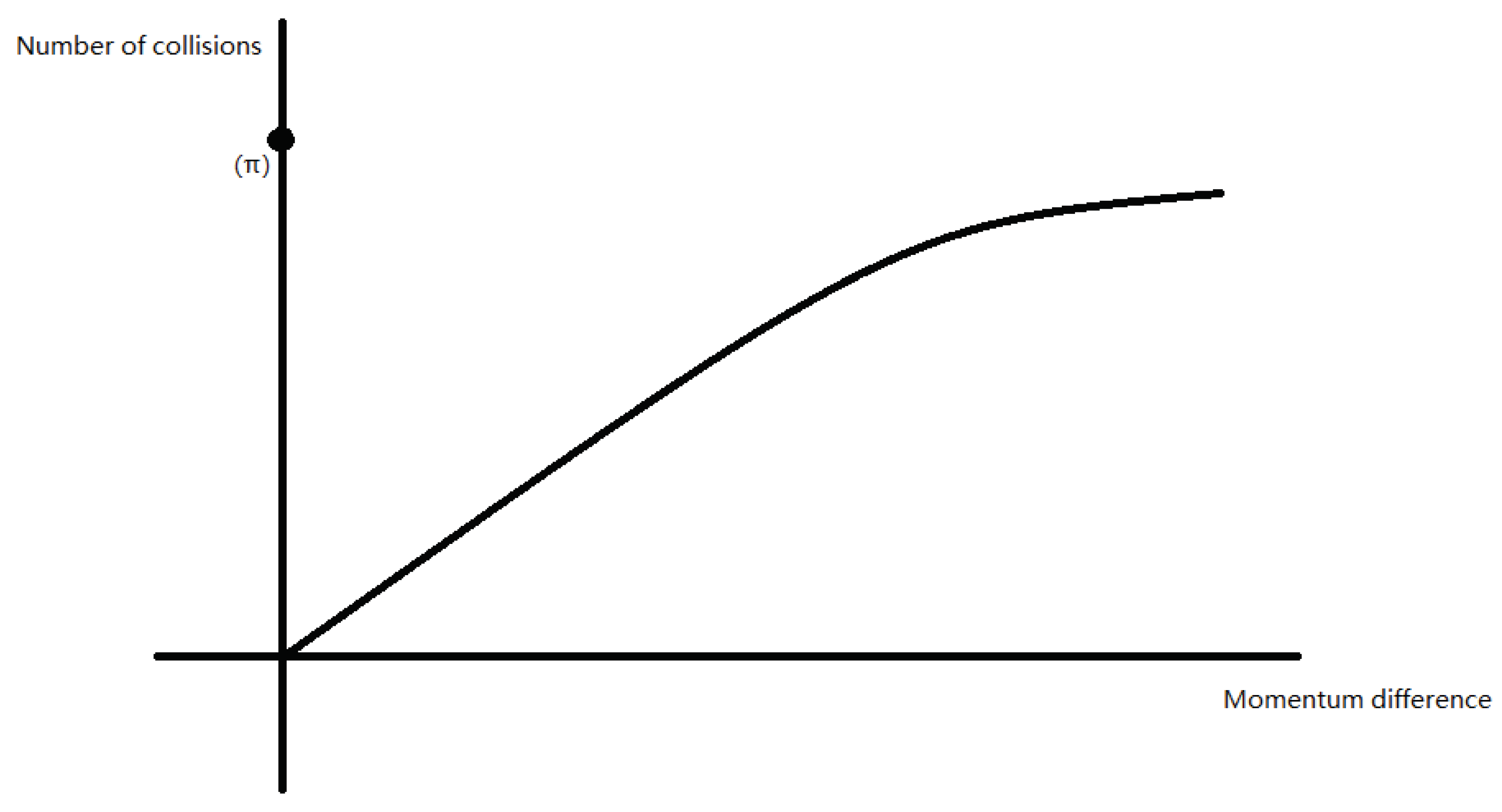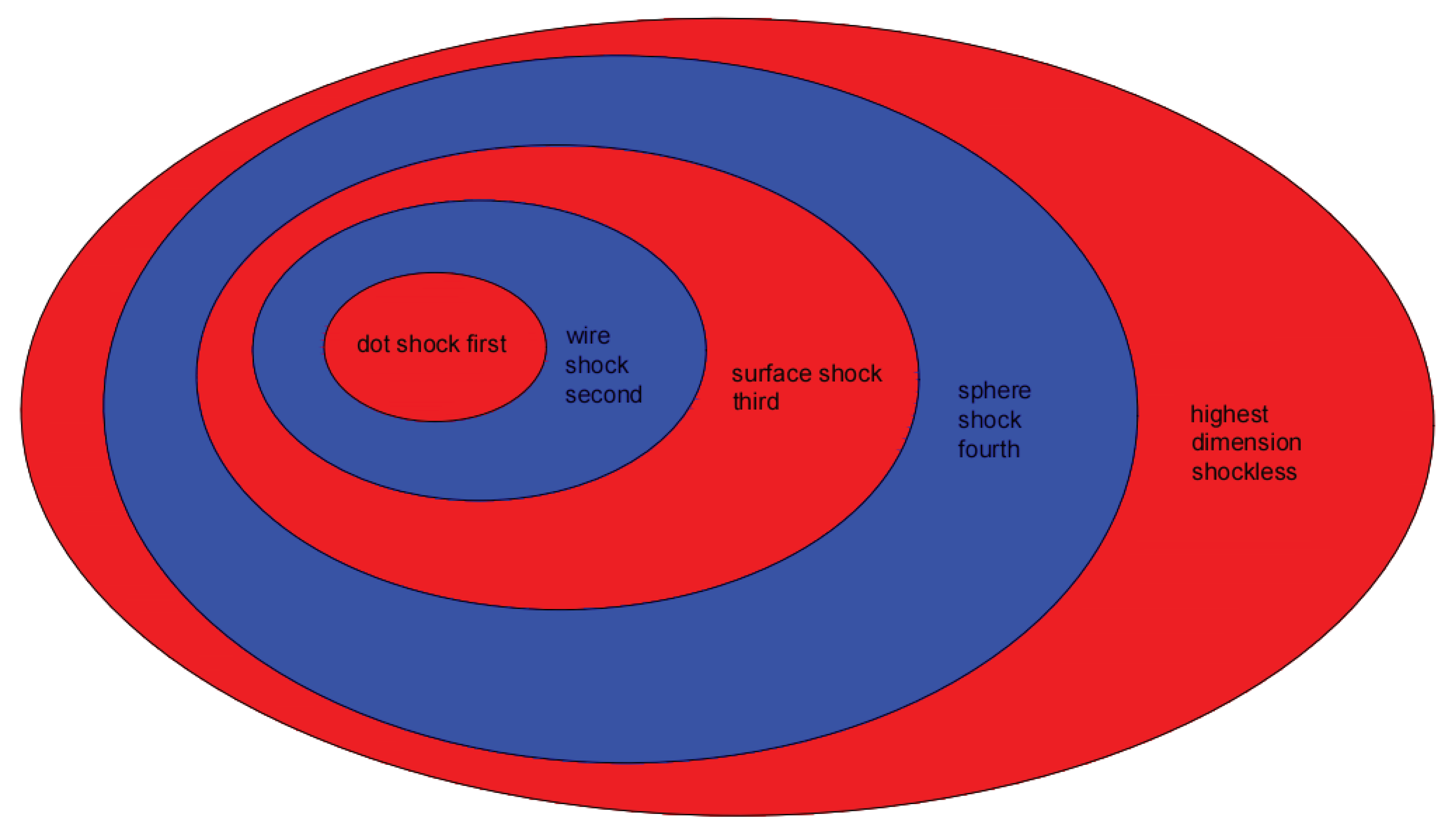1. Introduction: Why Gravity Is Not a Force
When discussing gravity, the theory of relativity
must be taken into account. The theory of relativity explains gravity as a
result of the curvature of space. If gravity is a force, it may be quantized,
but the results are evidently contradictory. The discrepancy between quantum
theory and relativity has become the main contradiction. The rotation is due to
the collision.
While the other fundamental forces (weak, strong,
and electromagnetic) can be unified, gravity cannot. Quantum mechanics likens
gravity to a particle called a graviton; this makes sense but ignores the
problem of forces changing quanta in space or the quanta themselves, such as
fermions and bosons, thereby changing energy. While this applies to other
forces, gravity is different. Gravity does not involve a transformation between
particles; rather, it has the same effect as other forces. Here, it is predicted
that gravity is a manifestation of the shape of space rather than a product of
space curvature. Therefore, gravity cannot be quantized, nor can it be
explained by quantum mechanics. Gravity does not have energy but is instead the
shape of space. The shape of the space is determined not only by gravity but
also by repulsion as the speed of light remains constant. Additionally, the
concept of collision is introduced to differentiate gravity from other forces.
2. Shape of Space
According to Einstein’s theory, the rotation of
energy can distort space [1]. During the
process of space distortion, a curved space is formed, but this approach
overlooks the essential matter: the unit length of space is not fixed. Given
that gravitational waves exist, there must be particle states [5]. However, gravitational waves are misleading.
Gravitational waves are produced by space deformation and energy change, as
gravity is space. Suppose there is a space 10 meters long, one meter of space
is compressed and shortened, and nine meters of space is stretched and
lengthened. which consists of a compressed space and a stretched space; this
compressed space is matter, and the stretched space is similar to gravity. In
addition, since the speed of light does not change, how can this stretch of
space be calculated?
The key lies in the fact that time does not change.
Regardless of how much space may change, the passage of a quantum through a
fixed unit of space remains fixed. While the space in the middle may undergo
stretching, this extension is not observable. Even though space appears
stretched, the time it takes for a quantum to pass through that space remains
the same. This implies that the speed increases. In the relativistic effect,
speed causes the scale to gradually decrease. In reality, the scale increases
gradually. Although the length of the unit space can change, the original
length is still used to calculate the perceived slow shrinkage of scale.
Gravity arises due to this effect. The reason is that speed creates the
illusion of changing time; what truly changes is scale. In other words, the
larger the scale is, the more time there is constant, and the more rapid the
acceleration is. The reason that time does not change is because the total
amount of space remaining unchanged does not change.
Another important factor to consider is the
existence of space for compression. Here, because v = l/t, there is a process
of slowing down, which results in a repulsive effect. This gives us the
illusion of different rates of time. For example, two clocks with different
speeds deviate under observation because the slower clock does not complete its
own space traversal. This comparison is based on the same length of space.
However, for all energetic matter, the duration remains the same. Space is
considered an independent unit of existence, much like another form of energy
that can undergo change under external influence. Energy does not exist within
space. This space is an approximate view, and the space that is truly squeezed
is all matter, so the squeezed and stretched spaces are intertwined. Two forms
of energy make up three-dimensional matter: positive energy and negative
energy. Gravitons may come from other dimensions. Since the length of the unit
space changes, but we cannot observe, the time through the unit space does not
change, so we need the time dimension as the fourth dimension in the
calculation process, but the essence of the fourth dimension is still the
direction dimension. Gravitons that form spatial variations are fundamentally
different from three-dimensional space. General relativity is mathematically
correct, but four-dimensional spacetime needs to be reunderstood.
3. Constant Cause of Low Speed
The constancy of the speed of light, as stated in
special relativity, means that no matter how fast an observer is moving, the
speed of light measured by that observer remains constant. This indicates that
it is influenced not by the velocity of an object that affects the speed of
light but rather by the shape of the space itself.
Figure 2.
The process of spatial shape change.
Figure 2.
The process of spatial shape change.
In a given space, there will be a certain speed,
and there is no concept of absolute time. Instead, the different speeds
correspond to different lengths of space. When photons are emitted, they start
at a speed of c, the speed of light. According to Debroglie’s theory, moving
objects generate phase waves. However, these phase waves can reach faster speeds
than light. This is because phase waves are not emitted by the objects
themselves but rather result from spatial changes caused by the objects. Let us
delve into the meaning of the phase wave speed, c*2/v. The velocity represents
the spatial variation in the transmission velocity. However, why was it
discovered? This is because even though the space between two relatively static
objects may be in constant equilibrium, this does not mean that these objects
do not affect space. In the overall space, the shape of space is constantly
changing. Throughout this process, the spatial variation can still be
transmitted at a speed of c*2. Once equilibrium is reached, this spatial wave
cannot be perceived. Therefore, in the c*2 inference process, a moving object
is constantly transmitting a deceleration signal v into space. Due to the
constant changes in space, this value decreases to c*2/v.
Now, what is the speed of light constant and maximum? The velocity of photon movement in any shape of space is equal to the velocity at which the space transmits the photon. Photons are always moving in a constant space, meaning that their velocity does not change with gravitational influence. Therefore, regardless of the space they traverse, photons consistently maintain a constant velocity, reaching the maximum speed of c. Once the speed of the photon is greater than the speed of space transport, the speed of the photon will slow down so that the speed of the photon is at most equal to the speed of space transport.
First, it is important to clarify the concept of a ’fixed speed’ in relation to spatial transmission. The influence between unit spaces is inherently constant and does not increase with speed. This implies that the speed of photon transmission, as a unit of space, remains relatively constant. When an object approaches the speed of light, its perceived time diminishes because the rate of space transfer aligns with the speed of photons. The process of space transfer corresponds to the time needed for particles to transition between adjacent spaces. However, when particles reach the next space, photons cannot enter the space, resulting in the apparent disappearance of photon time. Importantly, the cessation of time is attributed not only to reaching the speed of light but also to the speed of space transfer. In a given scene, there exists a fixed speed of space transfer irrespective of the speed of light. Photons and ether have the same speed, which is why we cannot find ether. The propagation medium of different observers determines the speed of the ether, and the speed of the ether determines the speed of the photon.
Energy is not confined by volume. Instead, it can be understood as a point of collision that creates a spatial configuration where the range of collisions is compressed. An energy body continuously vibrates within a small range, forming a unit space size and compressing the original unit space to zero, generating an extremely powerful repulsion force. Around this, the repulsion force stretches space one after another. When two objects are at rest, the initial velocity of the unit of energy emitted by this energy body is limited to the speed of light because the velocity of space transmission is limited, but the velocity of space transmission has fixed values only in different dimensions. There may be two additional types of energy: zero-collision and negative-collision. Zero collisional energy does not produce a repelling volume, so zero collision can move very slowly in what people think of as space.
Figure 3.
The positive energy is the central repulsive force, and the surrounding gravitational force is negatively charged.
Figure 3.
The positive energy is the central repulsive force, and the surrounding gravitational force is negatively charged.
4. Positive and Negative
There are two types of conclusions: positive and negative. Energy can be categorized into positive energy, negative energy, and massless energy. First, we discuss positive collisions. A quantum of positive collisions generates a central contraction space. However, the moving speed of space has a limit c*2, which means that a quantum with a collision speed greater than the moving speed of space cannot form a central repulsive force; this quantum also has positive energy but does not show volume, and the same is true of negative energy. The negative energy corresponds to central gravity. The negative energy is affected by gravitational acceleration because it creates space for growth. When it enters a gravitational field, the gap in the direction of gravity is larger, and the difference is larger. The negative energy is the center of space that creates tension, so the gravitational field of space will be compressed more, thereby accelerating the process. This acceleration is of the same magnitude as the positive energy. There may be an energy type called dark matter, which is postulated to exert a very large positive collision that cannot cause central repulsion. Dark energy is just negative energy, whereas antimatter is negative energy that cannot be utilized. The reason is that negative energy cannot absorb photons, which have positive energy. However, the approximate location of the antimator can be observed by ultraviolet light. Finally, zero energy is an advancement in dimensions.
5. Energy
There must be a zero-Conclusion quantum for the energy change to occur. An increase in the entropy of zero-collision quanta is the medium that drives an increase in energy. To explain the cause of quantum entanglement, for example, only two-dimensional energy can produce three-dimensional energy, and three-dimensional energy is zero relative to two-dimensional matter; this is concluded by the Riemann conjecture, but four dimensions can change matter. According to this relationship, when three-dimensional quanta within two-dimensional matter change, then a three-dimensional quantum in two-dimensional matter will immediately be affected at the same time, and the speed reaches up to c*2 because the velocities of space motion and space are two-dimensional. In other words, for two quanta to be entangled, two quanta must be produced in a plane.
Figure 4.
Negative energy is the repulsive force around the central attraction and is positively charged.
Figure 4.
Negative energy is the repulsive force around the central attraction and is positively charged.
The Earth orbits the Sun due to the interaction between gravitational [2]. However, why is there only gravity solely around the Earth? Because the repulsive force of the earth is greater than the gravitational force, the gravitational force around it is greater than the repulsive force, and this is what is gravity. The dynamic balance of forces causes celestial bodies, including stars in the universe, to move in their respective orbits. There is space between two substances in which the repulsive forces of gravity interact. In other words, it is not mass that changes space but space that produces mass.
6. Explaining Microscopic Uncertainty
Electromagnetic waves, such as light, are usually considered waves. However, in some cases, light particles can behave like waves. This concept leads us to the concept of wave‒particle duality. An important aspect of wave‒particle duality is the observer effect. Observations have revealed what causes the particle wave function to collapse. Thus, these observations are probabilistic in nature [4].
When a particle passes through a narrow gap, the space it occupies undergoes significant changes. The limited space within the gap may not be sufficient to accommodate the gravitational space of the particle. As a result, the compressed space surrounding the particle experiences substantial alterations. As the particle encounters this compressed space, it experiences a high amount of pressure. Causes it to move in a disorderly manner. As a result, the spherical volume is affected, and the resulting wave becomes unstable. The position of the waveform represents the probability as described by the wave function. When the particle exits the gap, the surrounding space stabilizes, and the deformed wave gradually reverts back to its original shape, i.e., the particle. However, the velocity of the particle becomes uncertain at this point. The absence of wave‒particle duality in macroscopic objects is primarily due to their larger size. A significant compression of space is needed to induce changes in fixed energy.
Figure 5.
Two-slit interference experiment.
Figure 5.
Two-slit interference experiment.
7. Guess
With slight deviation in the exact position where the particle enters the slit, there can be significant variations in the surrounding space around the particle. This variation creates an asymmetrical space when magnetic and electric fields intersect. As a result, the space becomes distorted.
Figure 6.
The space formed by the intersection of magnetic and electric fields.
Figure 6.
The space formed by the intersection of magnetic and electric fields.
The position at which a particle enters the slit indeed determines the asymmetry of the surrounding space, which ultimately influences the position and velocity of the particle upon exiting. In this scenario, it is impossible to simultaneously and accurately determine the position and velocity of the particle due to the inherent collision caused by inertia. The stability of the surrounding space continuously affects the particle through a process known as wave function collapse. Regardless of where the collapse occurs, the probabilistic nature of wave functions is applied to the particle. Over time, the position of the particle conforms to the principles described by the Schrodinger equation.
It is worth noting that quantum mechanics, as a scientific theory, is widely accepted and has demonstrated remarkable accuracy in describing the behavior of particles at the quantum scale. The probabilistic wave approach of quantum mechanics is indeed fascinating, and objections may arise in regard to the role of observers and superposition states. The reason observers appear is that any form of observation is regarded as high-dimensional energy, which does not directly affect three-dimensional matter but can change the movement trend of matter through three-dimensional matter. Two particles are created from the same plane, and when one particle changes its spin state, the other particle will also change to achieve plane equilibrium. This change does not occur in the same dimension of information transfer.
8. Hypothesis
8.1. Hypothesis Can Dirac Antimatter be Applied [7]?
Inverse time is a kind of negative collision energy, and negative energy and positive energy can be annihilated or restricted only and cannot be transformed. That is, positive energy can be transformed only with positive time.
8.2. Hypothesis Two Black Hole [8,9]
From a relativistic perspective, we know that escaping from a black hole is deemed impossible because of the overwhelming force of gravity and the presumption that time has stopped. Therefore, the following question arises: Since energy travels at the speed of light, how does time stop when energy enters a black hole? Each photon occupies a discrete unit of space in which all motion occurs at a speed greater than the speed of light. Black holes can be thought of as precursors to matter, and any energy that enters a black hole is converted into units of collision within the black hole. A black hole can be visualized as a two-dimensional plane, and no matter how fast an object is traveling, once it enters the black hole, it will remain in a state relative to this two-dimensional plane. In addition, in the universe, there is a large amount of two-dimensional energy. Three-dimensional matter forms through collisions between two dimensions, and dark matter and dark energy may have positive and negative energies, respectively, on different dimensions, which translates into attraction and repulsion phenomena.
8.3. Hypothesis Three Is It Possible That White Holes Exist [9]?
White holes are considered to be the opposite of black holes. A white hole is the result of central gravity produced by negative collisions around the center of the space it occupies, which results in a repulsive effect in its surrounding area. Theoretically, white holes could exist at the center of black holes. However, white holes cannot easily release anything because when quantum objects enter the internal space of a white hole, space contraction occurs, which slows the movement of the white hole.
Traditionally, wormholes are thought of as tools for traveling through time and space by means of a combination of black holes and white holes. According to the theory, black holes and white holes can only return to someone else’s timeline. Your own timeline cannot go backward. For example, if A were to go into a black hole first and then go into a white hole, A’s time would stop once A entered the black hole. However, B’s time would not change. Two years later, A is taken to the white hole by a force, and A’s time begins to accelerate. A exits the white hole after a year, and A finds B a year younger than A. However, from B’s perspective, three years have passed into B’s timeline, and A has gone for two years, which means that A has missed out on that year. Alternatively, if individual A were to go into the white hole first and then go into the black hole, A’s time would begin to accelerate, and two years later, A would come out two years older than B. After entering the black hole, A’s time would stop. After being pulled out by a force a year later, A would find that B was one year older than A was. Even though A was younger than B by one year, A still had gone for three years, during which events during which A could not change or influence it. In summary, traveling to the past is impossible because the past has already happened, and events in the future cannot be changed. One possible explanation for why dark energy and dark matter cannot be directly observed is that they lack color and volume in three-dimensional dimensions. Unlike ordinary matter, they do not consist of three-dimensional quanta. Additionally, they are believed to move at speeds faster than the speed of light, which prevents them from absorbing photons.
9. Collisions Produce
If the influence of different forms of energy is fixed and the composition of energy is singular, various manifestations of quantum energy should not occur. Additionally, with the passage of time, energy will remain static. To illustrate this, let us consider the three-body motion model. Although the motion of three small balls may be complex, there is a fixed value that governs their interactions. However, if one of the small balls experiences an uncertain change in its properties, the entire system becomes irregular. This unpredictable aspect can be seen as introducing another dimension or variable sphere into the system.
The universe began as a single point that suddenly vibrated. Since the surrounding points were static, the vibrating points would elastically collide with the surrounding points, causing them to vibrate as well and propagate the collisions to the surrounding points. Due to these collisions, the central point and the surrounding points develop different collision frequencies. As this process continues, the dimensions of the universe gradually emerge. However, although the universe is structured around these collisions, the surrounding collision quanta generated by the central collision are not exactly uniform. This is because the point at which the collision originates may not be located at the exact center of the universe.
10. Necessity of Circles
When the central point suddenly vibrates, suppose that a square is filled with 16 points without any gaps. When the central point vibrates, the resulting collision will propagate to the surround.
After a certain amount of time, the vibrating pattern evolves and eventually forms a structure resembling sixteen balls filled with squares. This structure appears relatively stable because there are numerous points in the surrounding space, similar to walls, that help maintain its shape. The reason for the formation of squares around the initial vibrating point is that the collisions cause elastic collisions between the points, leading to the arrangement of squares. These squares are formed in a manner that is a multiple of π, where 1 represents a human-defined size (which can be infinitely small). After a point vibrates back and forth, it exhibits two distinct trends: forward and backward movements. Both of these trends are multiples of π. The forward and backward movements give rise to two opposing forces: central repulsion and central attraction. The forces result from the collisions of the surrounding points, indicating that a single collision can result in the formation of two opposing energies. Due to the reduction in momentum consumption and collision frequency, the positive vibration is larger than the negative vibration, and the larger the dimension is, the smaller the difference.
The newly generated opposing forces can continue to affect the collisions of the surrounding points. However, the newly generated forces are almost negligible compared to the original forces. This is because new forces must be formed in integer multiples of π units of collisions to achieve stability. If this condition is not met, dimensional separation occurs. Furthermore, the newly generated forces are significantly smaller than the original forces. Despite this, the process is finite, meaning that a quantum can only produce a specific number of highly centered forces. In the forward direction, a central repulsion force is produced, resulting in an overall negatively charged quantum state.
The initial point has a huge mass difference from the universe, or you can think of the universe colliding with this point.
Figure 7.
When two objects of the same mass collide, the greater the difference in momentum is, the closer the number of collisions is to the π.
Figure 7.
When two objects of the same mass collide, the greater the difference in momentum is, the closer the number of collisions is to the π.
11. Conclusion
When a large central collision occurs, it produces two opposing collisions: positive energy and negative energy. These collisions, in turn, lead to the generation of new opposing collisions. For instance, a perfectly elastic collision can produce a central collision that results in Nπ elastic collisions. These collisions can take the form of particles that give rise to matter worldwide. All of these phenomena are formed by new unit collisions that are created by previous unit collisions. The newly created quantum cannot directly change the collision frequency of the previous quantum because the new frequency is low. However, this approach can change the position of energy, which subsequently affects the speed of energy. This is the basis of the observer effect. All the energy appears to be spherical because the initial collision point vibrates vigorously. When it collides with other points, it produces a collision frequency of π. This eventually results in the formation of a sphere and thereby creates a three-dimensional volume. However, macrolevel collisions are not as significant as microlevel collisions are, thus forming a sphere similar to a polygon. In the universe, there are different dimensional substances, and many unit energies manifest as spheres that vibrate in a circular plane. When they receive certain stimuli, they exhibit wave-like properties because the number of collisions is no longer a multiple of π. However, macroscopic substances are not solely products of plane collisions and do not easily exhibit wave properties.
Matter is governed by hierarchical control, where points vibrate into lines, lines into planes, planes into spheres, and so on. Points on a line move along the line by changing the position of a change in the position of a point without impacting the plane in which it resides. Similarly, planes contained within a sphere cannot fundamentally change the sphere. However, at this point, the final dimensions are not controlled. No action can change the ultimate dimension because energy does not disappear; it can only transform. While all the other dimensions are subject to control, the final dimension remains static. Three-dimensional matter rests without any external force, and the highest dimension corresponds to the central collision but does not vibrate itself.
Figure 8.
The relationship between dimensions is that the higher dimensions have a larger range but infinitely small energy, the lower dimensions are faster, and the lower dimensions produce more dimensions.
Figure 8.
The relationship between dimensions is that the higher dimensions have a larger range but infinitely small energy, the lower dimensions are faster, and the lower dimensions produce more dimensions.
12. Understanding the Riemann Conjecture
First, based on the previous statement, π is the number of collisions in a dimension; thus, how is the energy transmitted? Note that e, (1+1/n) *n; this formula is the base number of energy transmission, similar to a multiple of the conduction relationship; and the imaginary number i is the direction of a dimension generated by collision in the presence of one dimension. The e*i equivalent of a collision produces another dimension; this length can also be considered to be energy. That is, each new dimension addition is equivalent to 0 energy of the previous dimension; of course, 0 is an approximation.
The process of dimensionality formation is the same as the calculation of compound interest by banks. Regardless of the collision frequency and analytic continuation, a straight line collides with a plane composed of n-1 straight lines. Let V1 denote the velocity of the line and V2 denote the velocity of the line in the plane.
This is a straight line colliding to produce a plane. This is an overall dimension of speed; however, the number of dimensions is wireless n, and this process is repeated n times.
All the dimensions are in the same direction:
One dimension represents repulsion, two dimensions represent one-dimensional apparent gravity, three dimensions represent one- and two-dimensional apparent gravity, etc., and all the dimensions are 0.
The Riemann conjecture: 1+1/2*s+1/3*s+1/4*s...... [6].
Let us say that we start with a point with mass 1 and velocity V1. The velocity of each point after n passes is set to V2.
When a line collides to produce a plane, the velocity of a single line satisfies the above equation. A total speed of 0 can be achieved only by introducing imaginary numbers. The energy of the new dimension is equal to 0 relative to the previous dimension. Therefore, we perform п collisions and add all the dimensions to find the imaginary part. Since the relative dimension can be simplified, the imaginary part has an infinite number of possibilities.
The law of energy transfer can be realized only when the real part satisfies 1/2. The Riemann conjecture is the total energy of the new dimensions, and according to Euler’s formula, all dimensions in the same direction produce the effect of -1.
Whether π is irrational depends on the dimension. The lower the dimension is, the closer the number of collisions is to π. The more obvious the trend of the polygon until the motion stops. Even if we observe that the universe is expanding, it is just a different frame of reference; the whole universe is a frame of reference, and the universe is static.
13. Goldbach Conjecture
By the definition of prime numbers, we know that all prime numbers satisfy a relation [10]. Let y be a multiple of 2. The prism numbers are of size a, and even the numbers are of size b.
All prime numbers except 2:
y1 ≠ multiples of 3. Because you cannot add 3 to y if it is a multiple of 3. If the ones place is 1 or 6, the result is a multiple of 5 . This includes the result of multiplying two large prime numbers, but the result can still be written as a prime number plus an even number, without affecting the result, and can be ignored.
even number:
Therefore, any even number greater than 6 can be expressed as the sum of two prime numbers.
Acknowledgments
I express my sincere gratitude to all the individuals who provided assistance and support during the course of my research. It is my aspiration that my paper will be of assistance to a wider audience.
Data Availability Statement
No data are available in the manuscript.
References
- “Relativity theory.” An Einstein Encyclopedia, 31 December 2015; pp. 208–216. [CrossRef]
- “Newton and the law of Gravitation.” Pioneers of Science, 28 June 2012; pp. 180–202. [CrossRef]
- “Lagrange and laplace—the stability of the solar system, and the nebular hypothesis.” Pioneers of Science, 28 June 2012; pp. 254–272. [CrossRef]
- “From classical mechanics to Quantum Mechanics.” Quantum Mechanics, 16 Aprril 2009; pp. 7–42. [CrossRef]
- “Gravitational waves, theory and experiment (an overview).” Gravitational Waves, 29 January 2001; pp. 15–28. [CrossRef]
- “The Riemann hypothesis.” The Riemann Hypothesis; pp. 41–58. [CrossRef]
- “Antimatter.” Paul Dirac, 12 February 1998; pp. 46–87. [CrossRef]
- Dew-Jones, J.E. Black Hole Theory: A Review; National Library of Canada: Ottawa, ON, Canada, 1985. [Google Scholar]
- Gribbin, J. Unveiling the Edge of Time: Black Holes, White Holes, Wormholes; Harmony Books: New York, NY, USA, 1992. [Google Scholar]
- Friedland, Gerald. On the Goldbach Conjecture, 22 February 2018. [CrossRef]
|
Disclaimer/Publisher’s Note: The statements, opinions and data contained in all publications are solely those of the individual author(s) and contributor(s) and not of MDPI and/or the editor(s). MDPI and/or the editor(s) disclaim responsibility for any injury to people or property resulting from any ideas, methods, instructions or products referred to in the content. |
© 2024 by the authors. Licensee MDPI, Basel, Switzerland. This article is an open access article distributed under the terms and conditions of the Creative Commons Attribution (CC BY) license (http://creativecommons.org/licenses/by/4.0/).

